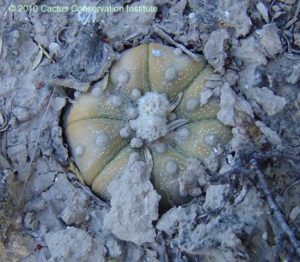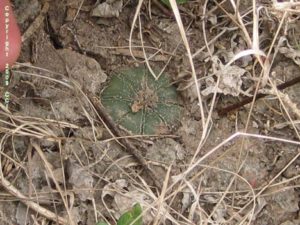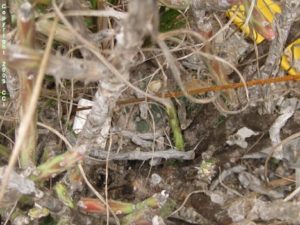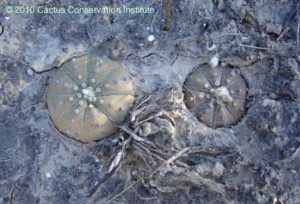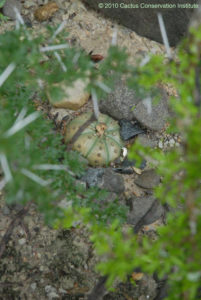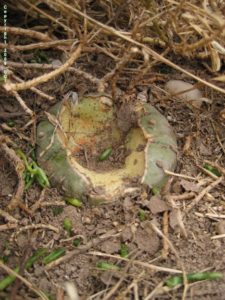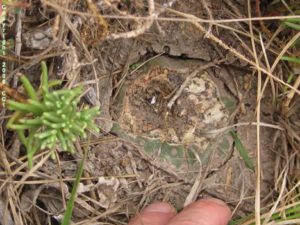Introducing Astrophytum asterias

Astrophytum asterias botanical illustration
Astrophytum asterias is a species of cactus in the genus Astrophytum, and is native to very small parts of Texas in the United States and Mexico. Common names include sand dollar cactus, sea urchin cactus, star cactus and star peyote.
Previously more abundant, this species is today restricted to a a very small area in South Texas, where there are around 2,000 individuals, and a few small sites in Tamaulipas.
As with certain other slowly maturing cacti, A. asterias is listed as endangered by the United States Fish and Wildlife Service, vulnerable on the International Union for Conservation of Nature’s Red List, and critically imperilled by The Nature Conservancy, listed on Appendix I of the Convention on International Trade in Endangered Species of Wild Fauna and Flora (CITES), meaning that international trade in wild-collected specimens is prohibited.
Read more about star cactus in Texas:
- US Fish and Wildlife Star Cactus Recovery Plan, 2003
- Janssen, G.K., J.M Poole, and P.S. Williamson. 2010. The research and recovery of star cactus (Astrophytum asterias). Section 6 final report. Austin: Texas Parks & Wildlife Department.
- US Fish and Wildlife Star Cactus Recovery Plan, 5-year review

A curious resemblance in the form of a fossilized sand dollar; also from Texas (Freer).
Star cactus in South Texas

Star cactus in habitat in South Texas
Green succulent leaved plants, visible on some of the pictures above, are Varilla texana. This is a common nurse plant for star cactus.
According to Janssen et al. 2010 V. texana was observed to be a nurse plant for around a quarter of the A. asterias specimens examined within fifteen vegetation transects on nine properties.
Other commonly associated plants that are visible in some of the images above include Hamatocactus setispinus & Opuntia leptocaulis.
Star cactus in Mexico








